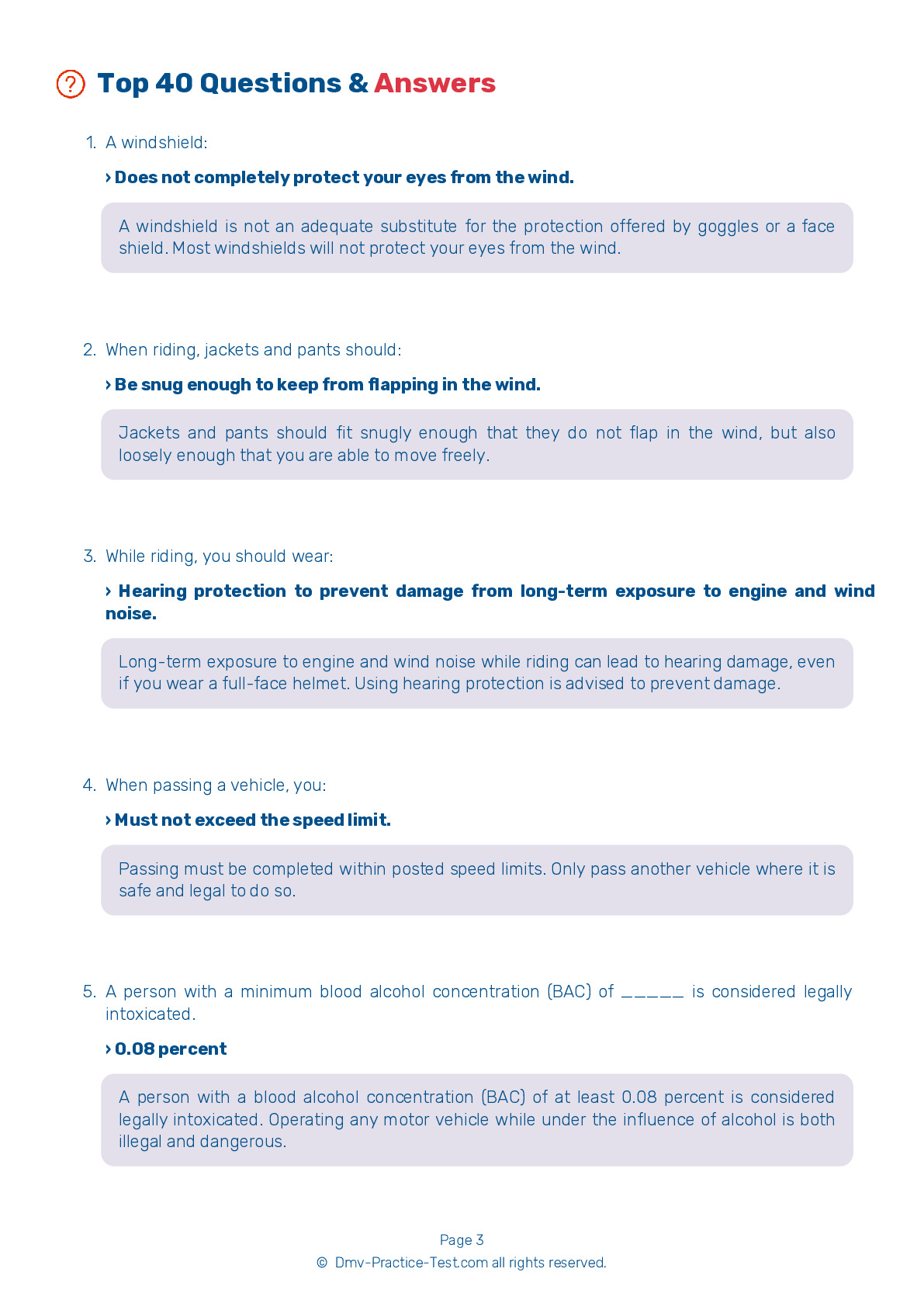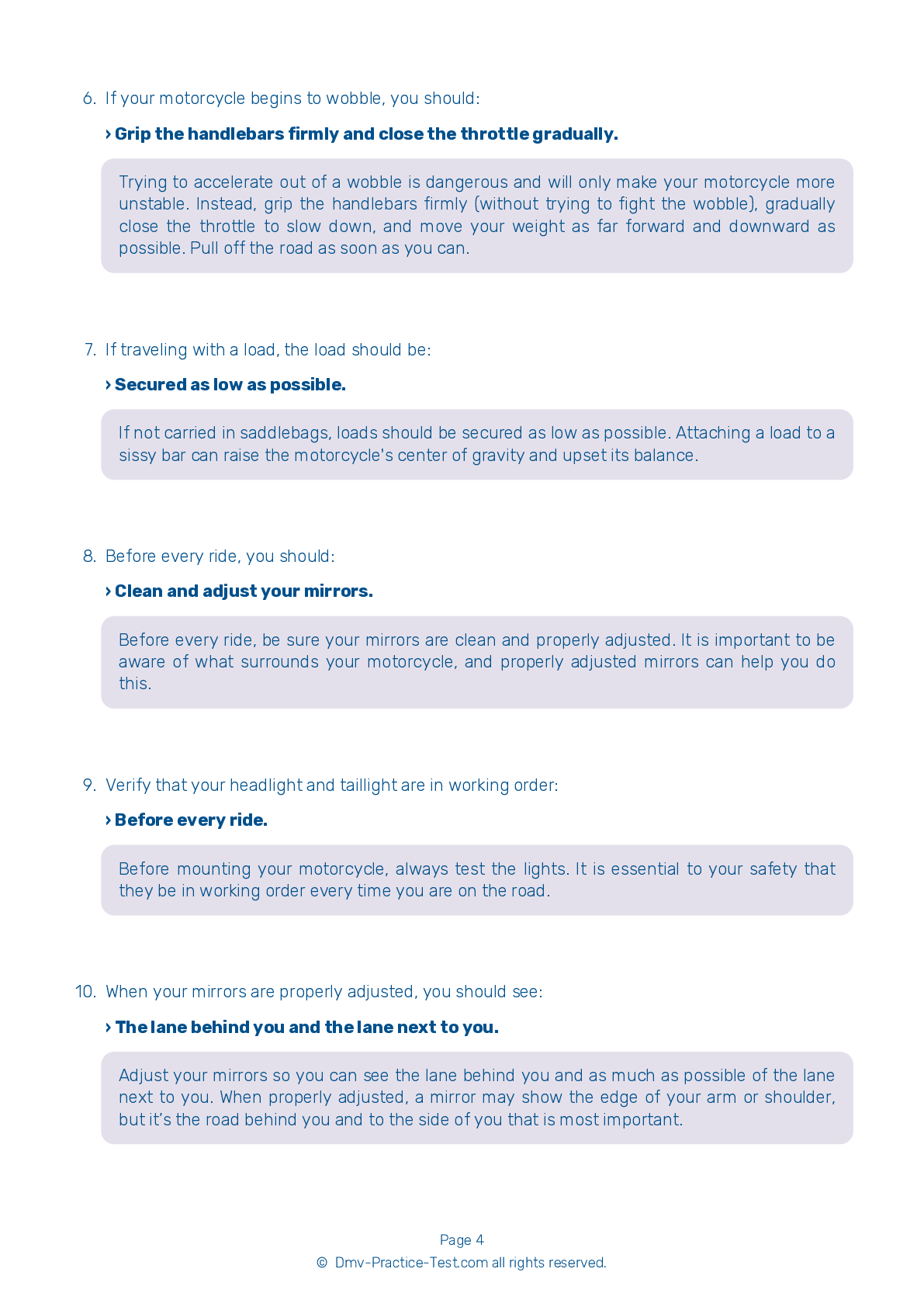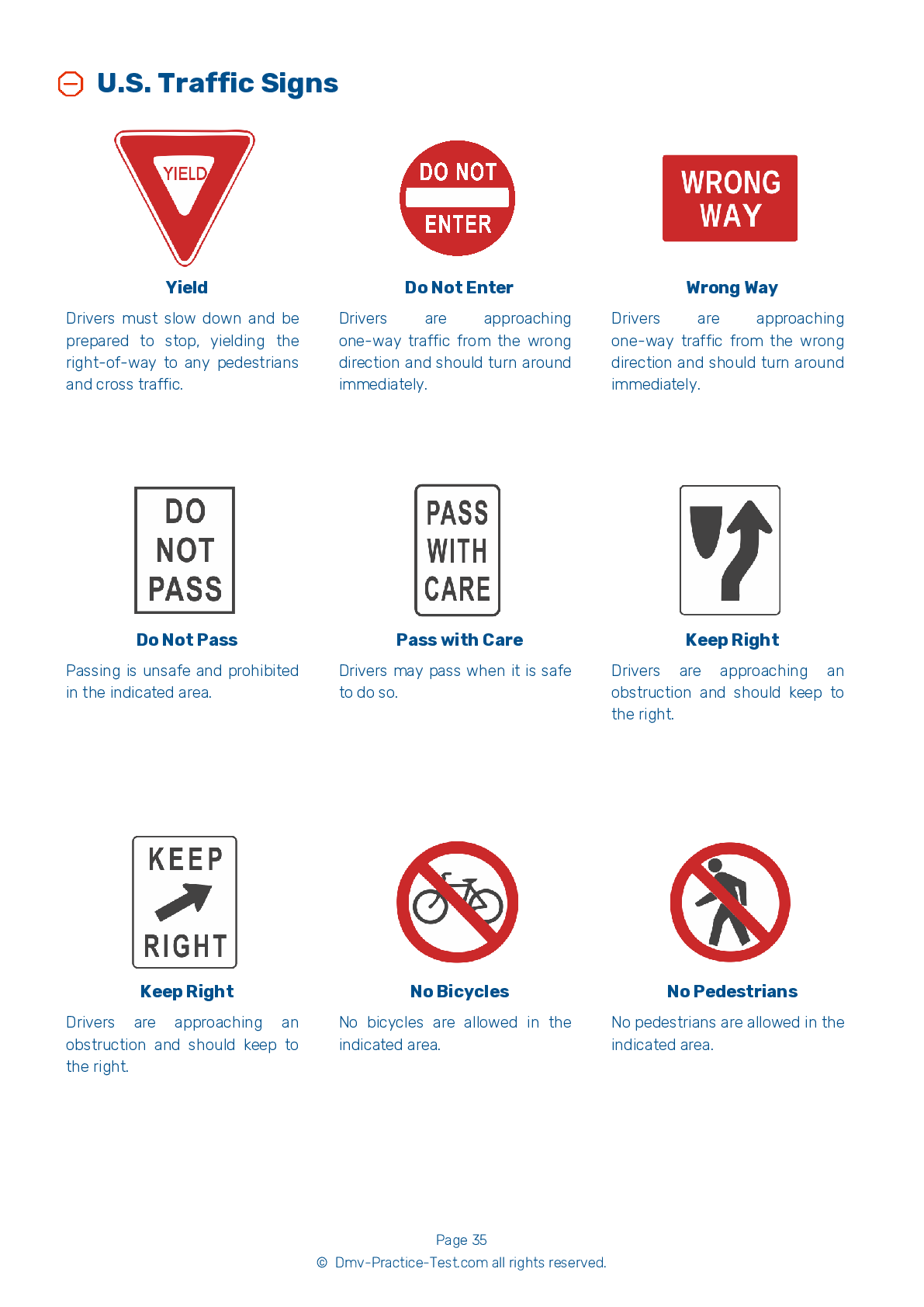Motorcycle Test | License OH 2025 | FREE Online Practice! #10
Take this FREE motorcycle test (license in OH 2025) to check your knowledge of the road rules. To improve your results, download a motorcycle handbook online, study theory, and practice for free on our website. Still worried about how to get a motorcycle license in Ohio in 2025? Check our website for more sample tests, train as much as possible, and boost your grades!
1 . A flat front tire is especially dangerous because:
A flat front tire is especially dangerous because it interferes with your ability to steer, which is essential to keeping your balance. If steering begins to feel heavy, it is possible that you have a flat front tire.
2 . To swerve correctly, you should:
If you must swerve to avoid a hazard, apply a small amount of pressure to the appropriate handle grip. To swerve to the left, press the left handle grip, then press the right to recover. To swerve to the right, press the right handle grip, then the left.
3 . As your motorcycle increases speed, you will:
It is necessary to shift into higher gears as your motorcycle increases its speed.
4 . When riding a motorcycle, it is important to:
While it is most important to be aware of what is ahead of you on the road, you cannot ignore what is behind you. You can keep track of the situation behind you by checking your mirrors consistently.
5 . When riding, jackets and pants should:
Jackets and pants should fit snugly enough that they do not flap in the wind, but also loosely enough that you are able to move freely.
6 . Maximum straight-line braking is done by:
Maximum straight-line braking is accomplished by simultaneously applying both the front and rear brakes without locking either wheel.
7 . If traveling with a load, the load should be:
If not carried in saddlebags, loads should be secured as low as possible. Attaching a load to a sissy bar can raise the motorcycle's center of gravity and upset its balance.
8 . Your lane position should do all of the following, except:
A properly chosen lane position should provide a number of benefits, including an increased ability to see others and to be seen. It should help you avoid wind blasts, other drivers' blind spots, and surface hazards. Your lane position should discourage other drivers from trying to share your lane and provide you with an escape route, should a hazard arise.
See the exact questions that will be on the 2025 Ohio DMV exam.
99.2% of people who use the cheat sheet pass the FIRST TIME
Jeneen was tired of paying $5/gallon. She got herself a scooter that required the motorcycle license. She studyed the motorcycle test cheat sheet and passed her test the next day!
Christopher tells us how he knew nothing prior to obtaining the motorcycle study guide, and he only got one question wrong because he clicked on the wrong answer by mistake.



